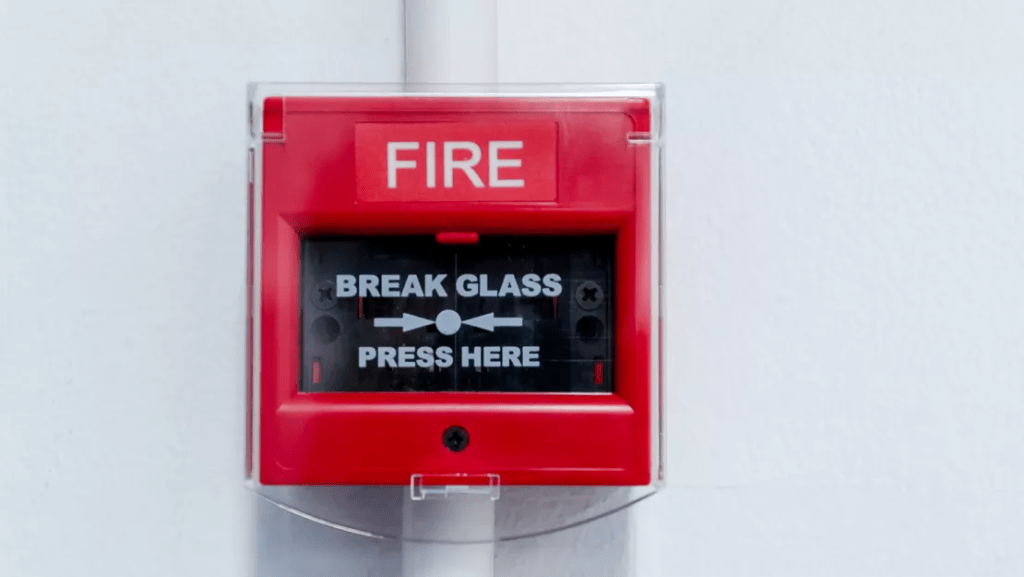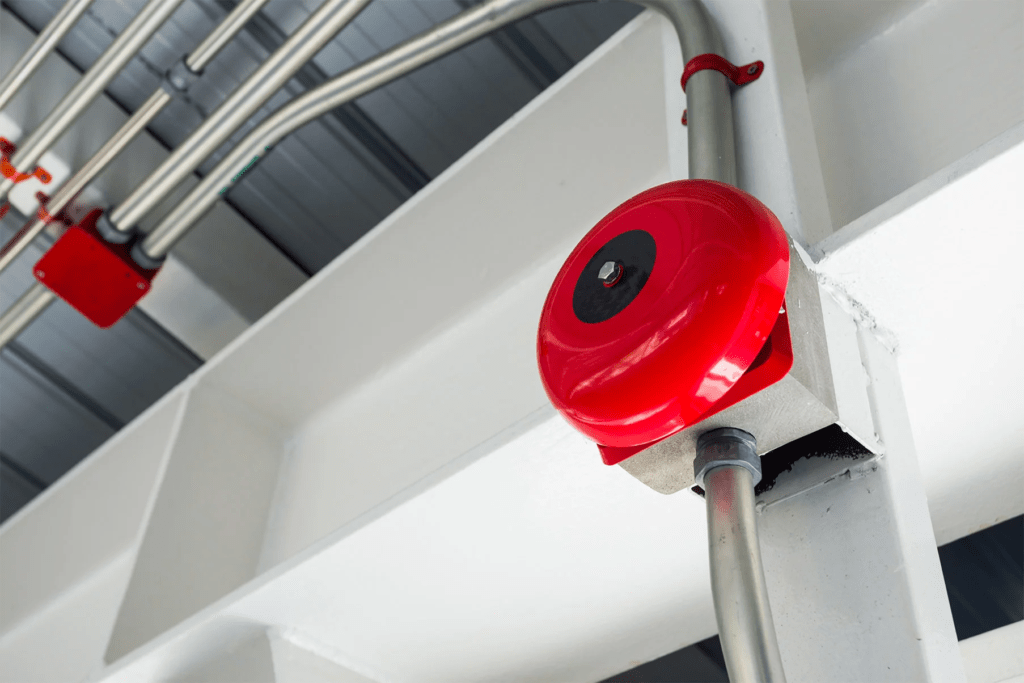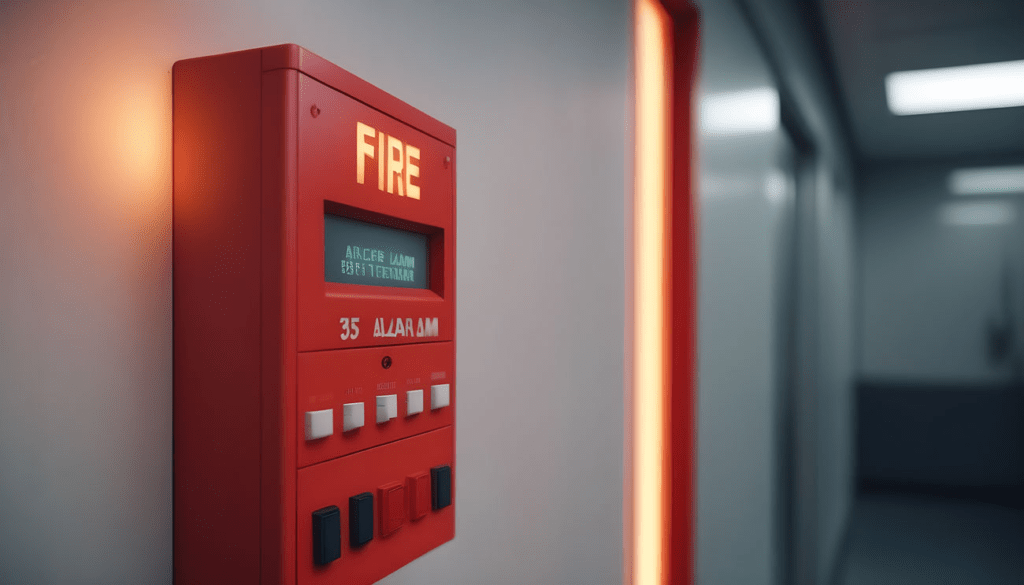Fire Alarm Systems: Your First Line of Defense
When it comes to keeping our homes and workplaces safe, fire alarm systems play a crucial role. These systems are our silent guardians, always on the lookout for signs of danger. But what exactly are fire alarm systems, and why are they so important?
A fire alarm system is a network of devices designed to detect fires early and alert people to potential danger. These systems are a key part of any fire protection strategy, working alongside other fire safety measures to keep us safe.

Fire alarm system Working Principle come in different types, but they all share the same goal: to spot fires quickly and give us time to react. Whether it’s in a small apartment or a large office building, these systems are always working to protect lives and property.
In today’s world, where fire safety is more important than ever, understanding how these systems work can make a big difference. Let’s dive deeper into the world of fire alarm systems and learn how they keep us safe day and night.
Automatic Fire Alarm Systems: Your 24/7 Fire Safety Partner

Automatic fire alarm systems are like having a tireless watchman in every room. These systems use a variety of sensors to detect signs of fire without any human help. Let’s break down how they work:
- Sensors on Duty: Automatic systems rely on different types of detectors:
- Smoke detectors: These spot the smoke particles in the air.
- Heat detectors: They sense when the temperature rises quickly or gets too high.
- Flame detectors: These can see the light given off by flames.
- Always Alert: These sensors are spread throughout a building, keeping an eye on different areas.
- The Brain of the System: All these sensors connect to a fire alarm control panel. Think of this as the system’s brain.
- Quick Thinking: When a sensor spots trouble, it sends a signal to the control panel right away.
- Sounding the Alarm: The control panel checks the signal and, if there’s danger, it sets off the alarms.
- Calling for Help: Many systems can also alert the fire department automatically, saving precious time.
The beauty of automatic systems is their speed. They can spot a fire in its early stages, often before anyone in the building notices. This quick response can be the difference between a small, manageable fire and a major disaster.
Remember, while automatic systems are great, they’re just one part of fire safety. Regular checks and maintenance are key to keeping these systems working their best.
Manual Fire Alarm Systems: Your Power to Act

While automatic systems are always on guard, manual fire alarm systems put the power in your hands. These systems are simple but effective tools that anyone can use to raise the alarm. Here’s what you need to know:
- What They Look Like: Manual fire alarms are usually small, red boxes mounted on walls. You might hear them called “pull stations” or “call points.”
- Where to Find Them: Look for these boxes near exits, in hallways, and other easy-to-reach spots. They’re placed where people can quickly get to them in an emergency.
- How to Use Them: Using a manual alarm is straightforward:
- If you see a fire, go to the nearest alarm box.
- Pull the lever or break the glass (depending on the type).
- This action triggers the building’s fire alarm system.
- When to Use Them: Use a manual alarm when:
- You see flames or smoke.
- You smell something burning but can’t find the source.
- You’re sure there’s a fire, even if the automatic alarms haven’t gone off yet.
- What Happens Next: Once activated, the alarm will:
- Sound throughout the building.
- Alert the building’s fire safety team.
- Often, automatically notify the fire department.
- Your Next Steps: After pulling the alarm:
- Start evacuating the building.
- Help others if you can do so safely.
- Never use elevators during a fire alarm.
Remember, manual alarms are there for a reason. Don’t be afraid to use them if you think there’s a fire. It’s always better to be safe than sorry. Quick action can save lives and property.
Manual alarms are a vital backup to automatic systems.
They give you the power to alert everyone quickly when you spot danger. Knowing where they are and how to use them is an important part of being fire-safety smart.
Automatic vs Manual Fire Alarm Systems: Understanding the Differences

Both automatic and manual fire alarm systems play crucial roles in fire safety, but they work in different ways. Let’s compare these two types to understand their strengths:
Automatic Fire Alarm Systems:
- Always On: They work 24/7, even when no one’s around.
- Quick Detection: Can spot fires very early, often before humans notice.
- Wide Coverage: Sensors can be placed throughout a building.
- Reduces Human Error: Don’t rely on people to spot and report fires.
- Detailed Information: Can tell exactly where in the building the fire started.
Manual Fire Alarm Systems:
- Simple to Use: Easy for anyone to activate.
- Reliable: No complex technology to fail.
- Visual Confirmation: Activated by people who have seen the fire.
- Empowers Occupants: Gives everyone the ability to raise the alarm.
- Cost-Effective: Generally cheaper to install and maintain.
When to Use Each:
- Automatic Systems: Best for constant protection, especially in large buildings or areas that aren’t always occupied.
- Manual Systems: Great as a backup and in areas where people are always present.
The Ideal Setup:
The best fire safety strategy often combines both types:
- Automatic systems provide round-the-clock protection.
- Manual systems offer a quick way for people to sound the alarm if they spot danger.
Remember, no system is perfect on its own. Automatic systems might miss some types of fires, while manual systems rely on people noticing and acting. By using both, we create a stronger safety net.
In the end, whether automatic or manual, the goal is the same: to alert people to danger as quickly as possible. Understanding both types helps us appreciate how they work together to keep us safe.
Choosing the Right Fire Alarm System: Key Factors to Consider

Picking the right fire alarm system is crucial for safety. Here are the main things to think about when making your choice:
- Building Type and Size:
- Large buildings might need more complex automatic systems.
- Smaller spaces could work well with simpler setups.
- Occupancy:
- Is the building always occupied or sometimes empty?
- This affects whether you lean more on automatic or manual systems.
- Legal Requirements:
- Check local fire codes and regulations.
- Make sure your system meets all legal standards.
- Budget:
- Consider both upfront costs and long-term maintenance.
- Remember, cutting corners on fire safety can be costly in the long run.
- Installation:
- Who will install the system? Look for certified professionals.
- Consider how the installation might disrupt your daily operations.
- Maintenance Needs:
- How often does the system need checking?
- Who will handle regular maintenance?
- Integration:
- Can the system work with other building safety features?
- Think about future upgrades or expansions.
- Testing:
- How easy is it to test the system regularly?
- Are there self-testing features?
- Reliability:
- Look at the track record of different systems.
- Consider backup power options for added reliability.
- User-Friendliness:
- Is the system easy for everyone to understand and use?
- Think about training needs for staff or residents.
- Environmental Factors:
- Consider things like dust, humidity, or temperature that might affect the system.
- Response Time:
- How quickly can the system detect and report a fire?
- Think about connection to local fire services.
Remember, the best system for you balances all these factors. It’s not just about picking the most advanced or cheapest option. The goal is to find a system that fits your specific needs and provides the best protection for your situation.








2 thoughts on “Understanding the Fire Alarm System Working Principle: Automatic vs. Manual”
Pingback: Mastering Smoke Detector Maintenance and Installation: Keeping Your Home Safe - Basic Elements
Pingback: Why Proper Fire Pump Room Maintenance Is Crucial for Building Safety - Basic Elements
Comments are closed.